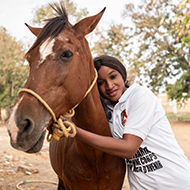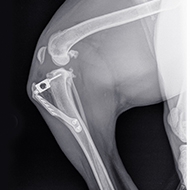Jo Dacombe takes her inspiration from the laboratory's collection of archeological specimens and skeletons.
Artist to create exhibition using the University of Leicester's bone laboratory
An artist from Leicester has begun a new project inspired by the extensive animal bones archive at the University of Leicester.
Jo Dacombe is immersing herself within the bone laboratory in the university's School of Archaeology and Ancient History to understand how archeologists generate stories about past human and animal relationships from the fragments of bones that are recovered through excavation.
Taking her inspiration from the laboratory's collection of archeological specimens and over 650 modern animal skeletons, Jo will create a work of art, which will be exhibited in Spring 2016.
Commenting on the project, Jo said: “I became interested in bones as part of the history of a landscape when I started picking up bones I found when I was out walking.
“It seemed to me that every bone told a story and this made me think about how archaeology is the discovery of stories through finding objects.
“I’m interested in animal bones because I’m interested in how we connect with the natural world. The stories behind bones reflect some of the ways we as humans think about animals and how our value of them changes depending on their context.
“The idea for the Reliquary Project is to consider how the value of these objects might change depending on how we display them.”
As part of the project, Jo will work with local schools and groups in a series of workshops to discuss these ideas raised about archeology and animals.
Dr Richard Thomas, senior lecturer in archaeology in the school of archaeology and ancient history, said: “It is tremendously exciting to have our first artist-in-residence within the bone laboratory.
“I am greatly looking forward to working with Jo and exploring how an artistic perspective on a scientific discipline can help communicate stories and ideas from archaeology in new ways, particularly to school children.”
The project will culminate next spring with an exhibition at the university's creative arts centre, Embrace Arts.
Image (C) University of Leicester







 Birmingham Dogs Home has issued an urgent winter appeal as it faces more challenges over the Christmas period.
Birmingham Dogs Home has issued an urgent winter appeal as it faces more challenges over the Christmas period.
